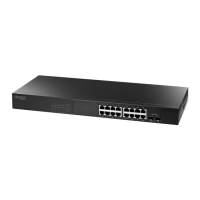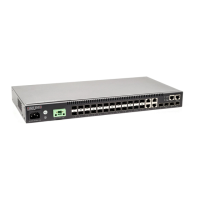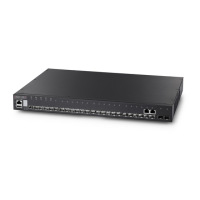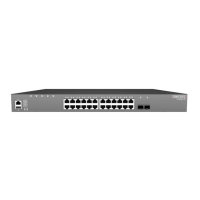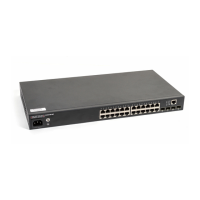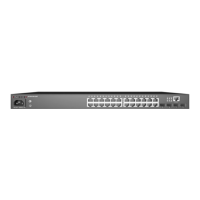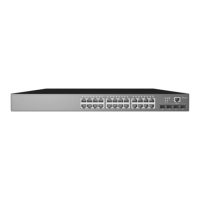C
HAPTER
10
| Spanning Tree
Configuring STP Global Settings
– 73 –
◆ Maximum Age — The maximum time (in seconds) a device can wait
without receiving a configuration message before attempting to
reconfigure. All device ports (except for designated ports) should
receive configuration messages at regular intervals. Any port that ages
out STP information (provided in the last configuration message)
becomes the designated port for the attached LAN. If it is a root port, a
new root port is selected from among the device ports attached to the
network. (Note that references to “ports” in this section mean
“interfaces,” which includes both ports and trunks.)
Minimum: The higher of 6 or [2 x (Hello Time + 1)]
Maximum: The lower of 40 or [2 x (Forward Delay - 1)]
Default: 20
◆ Hello Time — The interval (in seconds) at which the root device
transmits a configuration message.
Default: 2
Minimum: 1
Maximum: The lower of 10 or [(Max. Message Age / 2) -1]
◆ Forward Delay — The maximum time (in seconds) this device will wait
before changing states (i.e., discarding to learning to forwarding). This
delay is required because every device must receive information about
topology changes before it starts to forward frames. In addition, each
port needs time to listen for conflicting information that would make it
return to a discarding state; otherwise, temporary data loops might
result.
Minimum: The higher of 4 or [(Max. Message Age / 2) + 1]
Maximum: 30
Default: 15
◆ Root Priority — The priority of the device in the Spanning Tree that
this switch has accepted as the root device.
◆ Root MAC Address — The MAC address of the device in the Spanning
Tree that this switch has accepted as the root device.
◆ Root Path Cost — The path cost from the root port on this switch to
the root device.
◆ Root Port — The number of the port on this switch that is closest to
the root. This switch communicates with the root device through this
port. If there is no root port, then this switch has been accepted as the
root device of the Spanning Tree network.
◆ Root Maximum Age — The maximum time (in seconds) this device
can wait without receiving a configuration message before attempting
to reconfigure. All device ports (except for designated ports) should
receive configuration messages at regular intervals. If the root port
ages out STA information (provided in the last configuration message),
a new root port is selected from among the device ports attached to the
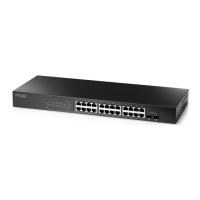
